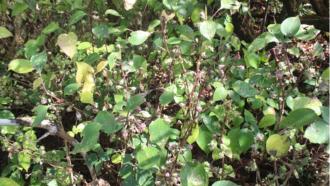
Not more than two decades ago, I played with snails on rainy days and would see them crawling abundantly on plants. My friends and I would collect them in glass bottles, treating them as pets.
It appears that snails have almost vanished from our gardens. Lush green landscapes and trees have dwindled to become a few patches of green separated by tall buildings in between.
Snails are vital for ecosystems. They eat litter from trees, plants, and dead animals, thereby recycling nutrients. In the process, they also provide a source of calcium for animals in calcium poor regions.
With their many benefits, they are among the slowest creatures in the world. They are even slower than sloths. Crawling with the help of their muscular foot pulses loaded with mucous, they come in many shapes, colours and sizes.
These creatures can also act as bio-indicators. They are sensitive to any change in temperature, soil pH, calcium content or disturbance in their habits. These changes will bear an impact on the number and type of snails that appear at a location.
The smallest of land snails can fit inside a grain of sand, with a shell that is only 0.48 millimetres high. This microscopic species was discovered in Vietnam in February this year.
However fascinating these creatures are, research on snails from tropical countries, including India, occurred only in the mid- 19th to early 20th century.
Even then, the focus was on developing an inventory of regional water snails but there was little emphasis on descriptions of their habitat, reproduction, feeding ecology and nutrient availability. The identification of snails during this time happened based on morphological characteristics. The chances of misidentification are high because of these reasons.
Land snails
The research potential is huge. Land snails form 6% of the total species found around the world. Most snails known today are those found in Europe and North American countries. India is home to 1,140 species of land snails. The diversity of these molluscs is high in the Western Ghats and Northeast India, more than 75% of snail species are endemic to these regions.
One such snail, found in the Western Ghats, is arguably the most charismatic species. Indrella ampulla was originally discovered in the Nilgiri Hills but is now found abundantly across the wet evergreen forests of central and southern Western Ghats. Interestingly, Indrella ampulla is the only species under the genus Indrella. It is polymorphic, predominantly exhibiting various colours including red and pale yellow.
A recent study by Dr Aravind Madhyastha, Associate Professor, ATREE on the feeding and reproductive habits of the species emphasises just how important researching these tiny slimy creatures is.
Descriptions of egg-laying, the size of the eggs and other specificities have been recorded for the first time in India. They also display shell mounting and face-to-face mating behaviours. The species was found to feed on both live and dead plants, they also feed on animal matter, and litter on the forest floor, showing broad food preferences. It is hypothesised that mushrooms and dead animals could be a source of dietary calcium.
This fascinating species also shifts in colour as they age-- from dark to brighter yellow, red and orange. However, why they undergo this change remains a mystery.
To understand their variation and shifts in colour, to gain insight into their interesting diets, more research in laboratory and field conditions is the need of the hour.
“DNA metabarcoding of faecal samples and gut content will help to understand the species’ dietary health,” says Dr Madhyastha.
Although there have been many studies on the impact of urban development on vertebrates and plants, there have been few studies on how human activities have affected snails.
To understand native species of snails and their ecology, population status, and phylogeny, research is essential. It is also essential to revise the old taxonomy with updated classifications.
This calls for wider participation and engagement of nature enthusiasts to pursue snail-watching.
The India Biodiversity Portal has a dedicated page for enthusiasts and amateurs to report snails called—Mapping Indian Snails and Slugs (MISS). It would be worthwhile to encourage awareness and outreach activities on land snails to understand these wonderful bio-indicators better.
Editor's Note: An earlier version of this article was published in Deccan Herald.






